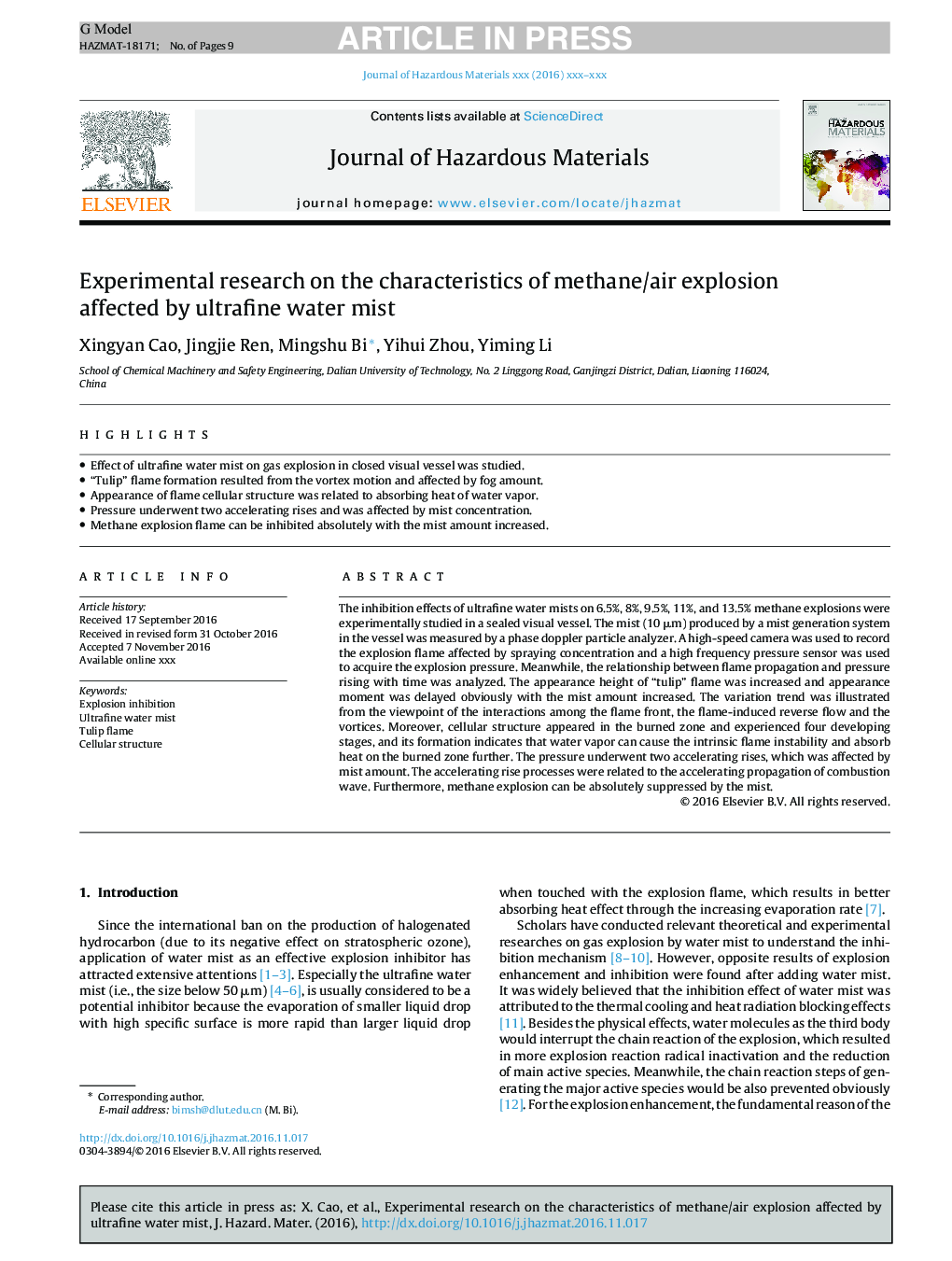| Article ID | Journal | Published Year | Pages | File Type |
|---|---|---|---|---|
| 4979876 | Journal of Hazardous Materials | 2017 | 9 Pages |
Abstract
The inhibition effects of ultrafine water mists on 6.5%, 8%, 9.5%, 11%, and 13.5% methane explosions were experimentally studied in a sealed visual vessel. The mist (10 μm) produced by a mist generation system in the vessel was measured by a phase doppler particle analyzer. A high-speed camera was used to record the explosion flame affected by spraying concentration and a high frequency pressure sensor was used to acquire the explosion pressure. Meanwhile, the relationship between flame propagation and pressure rising with time was analyzed. The appearance height of “tulip” flame was increased and appearance moment was delayed obviously with the mist amount increased. The variation trend was illustrated from the viewpoint of the interactions among the flame front, the flame-induced reverse flow and the vortices. Moreover, cellular structure appeared in the burned zone and experienced four developing stages, and its formation indicates that water vapor can cause the intrinsic flame instability and absorb heat on the burned zone further. The pressure underwent two accelerating rises, which was affected by mist amount. The accelerating rise processes were related to the accelerating propagation of combustion wave. Furthermore, methane explosion can be absolutely suppressed by the mist.
Related Topics
Physical Sciences and Engineering
Chemical Engineering
Chemical Health and Safety
Authors
Xingyan Cao, Jingjie Ren, Mingshu Bi, Yihui Zhou, Yiming Li,
